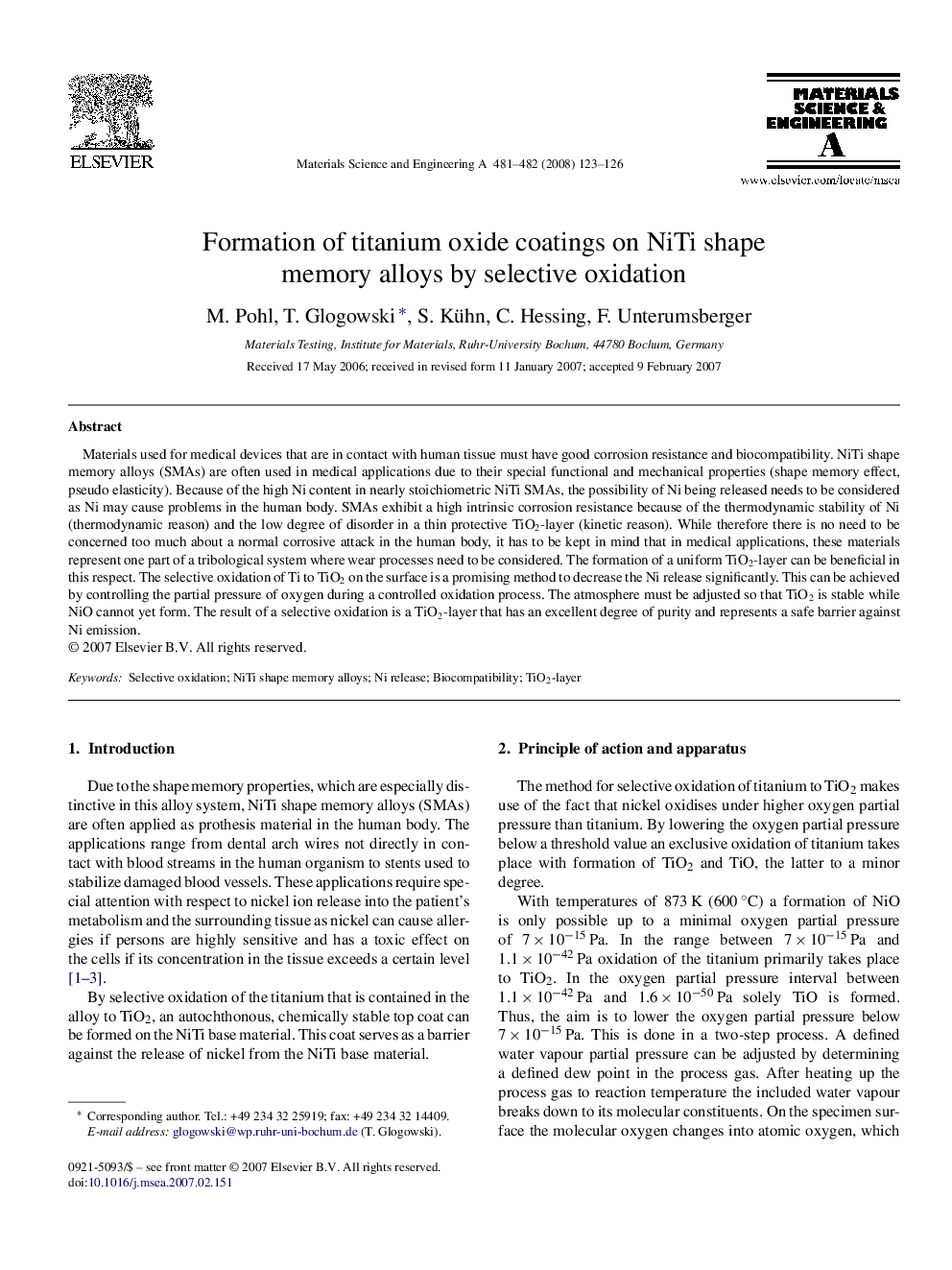| Article ID | Journal | Published Year | Pages | File Type |
|---|---|---|---|---|
| 1582453 | Materials Science and Engineering: A | 2008 | 4 Pages |
Materials used for medical devices that are in contact with human tissue must have good corrosion resistance and biocompatibility. NiTi shape memory alloys (SMAs) are often used in medical applications due to their special functional and mechanical properties (shape memory effect, pseudo elasticity). Because of the high Ni content in nearly stoichiometric NiTi SMAs, the possibility of Ni being released needs to be considered as Ni may cause problems in the human body. SMAs exhibit a high intrinsic corrosion resistance because of the thermodynamic stability of Ni (thermodynamic reason) and the low degree of disorder in a thin protective TiO2-layer (kinetic reason). While therefore there is no need to be concerned too much about a normal corrosive attack in the human body, it has to be kept in mind that in medical applications, these materials represent one part of a tribological system where wear processes need to be considered. The formation of a uniform TiO2-layer can be beneficial in this respect. The selective oxidation of Ti to TiO2 on the surface is a promising method to decrease the Ni release significantly. This can be achieved by controlling the partial pressure of oxygen during a controlled oxidation process. The atmosphere must be adjusted so that TiO2 is stable while NiO cannot yet form. The result of a selective oxidation is a TiO2-layer that has an excellent degree of purity and represents a safe barrier against Ni emission.
